Master and Margarita chapter summary introduces readers to a captivating and enigmatic novel that explores profound themes and weaves a tapestry of magical realism. Mikhail Bulgakov’s masterpiece delves into the complexities of good and evil, love and sacrifice, and the nature of reality.
Each chapter of Master and Margarita unfolds with intricate detail, revealing a cast of unforgettable characters and thought-provoking events. From the enigmatic Master to the strong-willed Margarita, and the enigmatic Woland and his entourage, Bulgakov masterfully intertwines the mundane and the supernatural, creating a narrative that both enchants and challenges.
Introduction
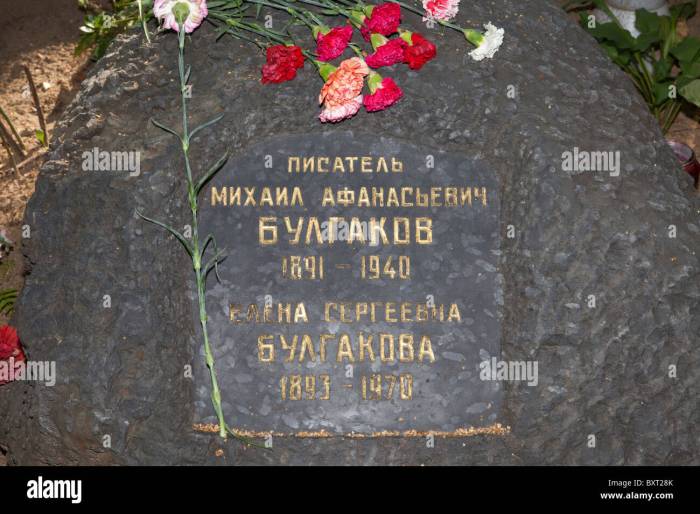
Mikhail Bulgakov’s “Master and Margarita” holds a pivotal place in Russian literature, renowned for its satirical wit, philosophical depth, and exploration of morality.
The novel intertwines three distinct storylines: the persecution of a writer known as the Master by the literary establishment, the appearance of the devil, Woland, and his entourage in Moscow, and the biblical narrative of Pontius Pilate’s encounter with Jesus Christ.
Main Characters
- Master:A writer whose manuscript about Pontius Pilate is rejected and ridiculed, leading to his mental breakdown.
- Margarita:The Master’s devoted lover, who allies with Woland to seek revenge on those who wronged him.
- Woland:The devil, who arrives in Moscow with his retinue, including the demonic cat Behemoth and the beautiful witch Hella.
- Pontius Pilate:The Roman governor of Judea, who faces a moral dilemma when he must decide Jesus Christ’s fate.
Chapter Summary

Mikhail Bulgakov’s “Master and Margarita” is a multifaceted novel that delves into themes of love, art, religion, and the nature of good and evil. Each chapter of the novel unfolds a unique and captivating narrative, introducing a cast of memorable characters and exploring profound philosophical questions.
Chapter 1: Never Talk to an Unknown Person
The novel opens with a conversation between two men on a park bench in Moscow. One man, Berlioz, the editor of a literary magazine, dismisses the existence of God and the supernatural. The other man, the mysterious Professor Woland, predicts that Berlioz will soon meet his end.
Berlioz’s skepticism is challenged when he is run over by a streetcar, as Woland had foretold.
Chapter 2: Pontius Pilate
The narrative shifts to ancient Jerusalem, where Pontius Pilate, the Roman prefect, interrogates Yeshua Ha-Notsri, a wandering preacher accused of sedition. Pilate, torn between his duty and his conscience, ultimately condemns Yeshua to crucifixion. This chapter explores the themes of justice, authority, and the struggle between good and evil.
Chapter 3: Satan’s Retinue
Professor Woland arrives in Moscow with his retinue of demonic companions, including the mischievous cat Behemoth and the enigmatic Azazello. They unleash chaos and confusion upon the city, exposing the hypocrisy and corruption of Soviet society. The chapter introduces the novel’s supernatural elements and foreshadows the confrontation between good and evil.
Character Analysis: Master And Margarita Chapter Summary
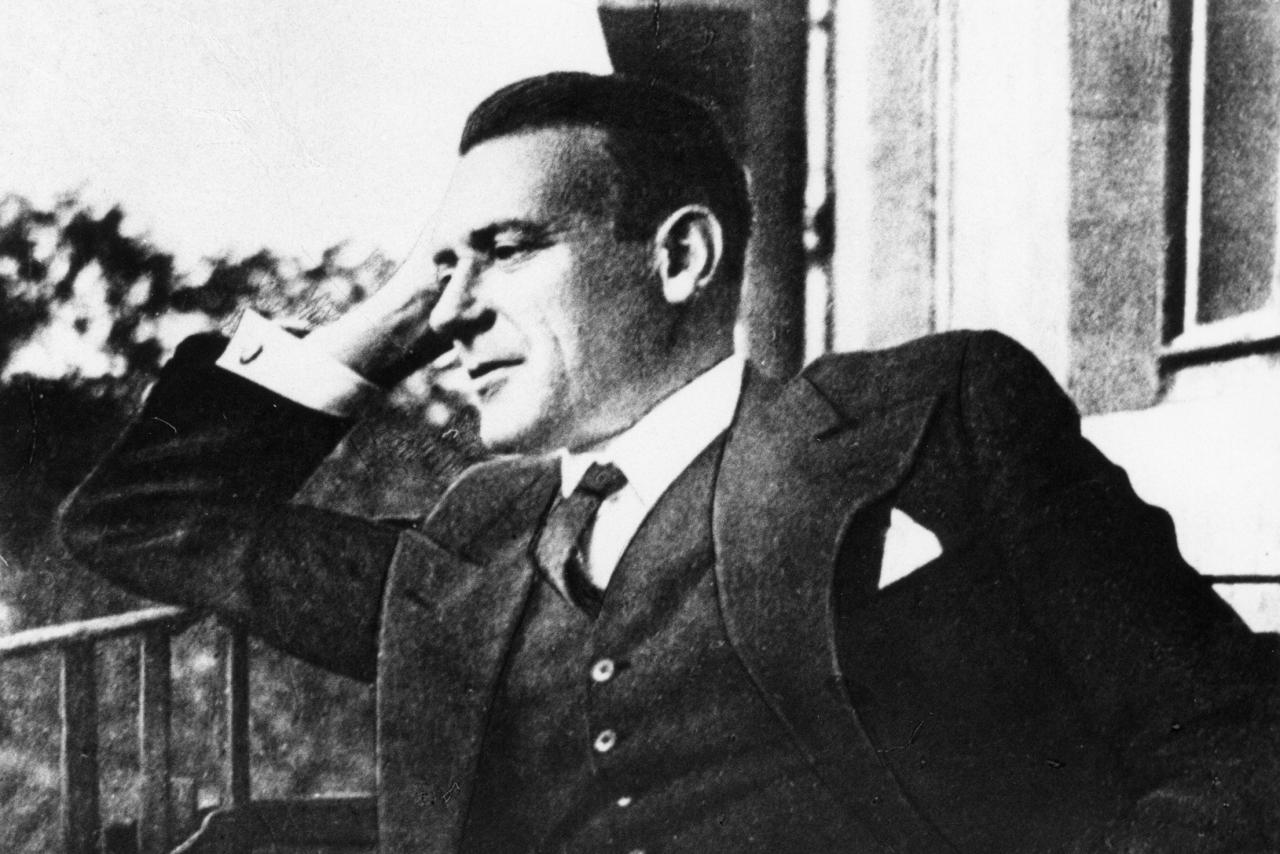
The characters in The Master and Margaritaare complex and enigmatic, each playing a significant role in the novel’s intricate plot. The Master, Margarita, and Woland are three particularly notable characters whose actions and interactions drive the narrative and explore profound themes.
The Master
The Master is a mysterious and enigmatic figure who serves as the novel’s protagonist. He is a talented writer who has written a novel about Pontius Pilate, but his work has been rejected by the Soviet authorities. As a result, he has become disillusioned and withdrawn from society.
The Master’s character is complex and contradictory. He is both brilliant and vulnerable, strong-willed and yet easily manipulated. He is a man who is haunted by his past and struggling to find his place in the world.
Margarita
Margarita is the Master’s lover and muse. She is a strong and independent woman who is not afraid to stand up for what she believes in. She is also deeply devoted to the Master and will do anything to help him.
Margarita’s character is a powerful example of female empowerment. She is a woman who is not defined by her relationship with a man but rather by her own strength and determination.
Woland and His Entourage
Woland is a mysterious and powerful figure who appears in Moscow with his entourage of demons. Woland is a complex and enigmatic character who represents both good and evil. He is a trickster who delights in playing games with people, but he is also a just and compassionate figure who helps those who deserve it.
Woland’s entourage of demons each has their own unique personality and abilities. They represent the various aspects of Woland’s power and help him to carry out his plans.
Themes and Motifs
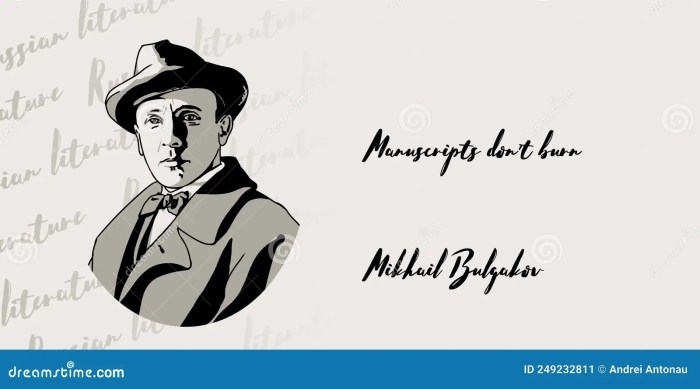
Master and Margaritaexplores a range of significant themes, including the eternal struggle between good and evil, the transformative power of love and sacrifice, and the elusive nature of reality.
Good vs. Evil
The novel presents a stark contrast between the forces of good and evil, embodied by the characters of Yeshua Ha-Notsri and Woland, respectively. Yeshua represents the epitome of goodness, compassion, and forgiveness, while Woland embodies the darker aspects of human nature, including cruelty, deceit, and temptation.
Through the interactions between these characters, Bulgakov explores the complex interplay between good and evil within the human soul. He suggests that even in the darkest of times, the flicker of goodness can prevail, while even the most righteous individuals are capable of succumbing to temptation.
Love and Sacrifice
Master and Margaritaalso delves into the transformative power of love and sacrifice. The love between the Master and Margarita is a driving force throughout the novel, leading them to endure great hardships and ultimately triumph over adversity.
Bulgakov portrays love as a force that can transcend the boundaries of time and space, even in the face of death. Through the characters of the Master and Margarita, he celebrates the enduring power of human connection and the willingness to make sacrifices for those we love.
Nature of Reality
Master and Margaritachallenges the reader’s perception of reality, blurring the lines between the mundane and the fantastical. The novel’s dream sequences, supernatural elements, and shifting perspectives create a sense of disorientation and uncertainty.
Through this, Bulgakov invites us to question the nature of our own reality and the extent to which our perceptions are shaped by our beliefs and experiences. He suggests that the world we perceive is not always as straightforward as it seems, and that there may be hidden dimensions beyond our understanding.
Literary Style and Techniques
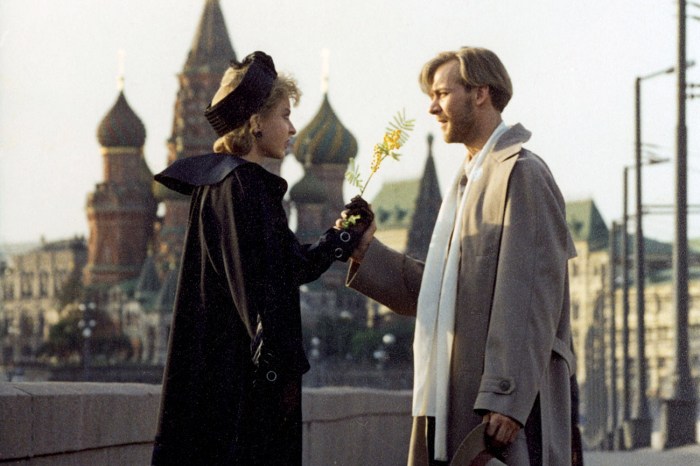
Mikhail Bulgakov’s writing in The Master and Margaritais characterized by its unique blend of realism and fantasy, creating a distinct literary style that sets the novel apart. Bulgakov employs various techniques to achieve this effect, including magical realism, satire, and intertextuality.
Magical Realism
Magical realism is a literary genre that blends realistic and fantastical elements, creating a world where the impossible and the mundane coexist. In The Master and Margarita, Bulgakov uses magical realism to create a surreal and dreamlike atmosphere. For example, the novel features talking animals, flying characters, and supernatural events that occur alongside everyday life.
Satire
Satire is a literary technique that uses humor, irony, and exaggeration to criticize or ridicule society. Bulgakov employs satire in The Master and Margaritato critique the Soviet bureaucracy, censorship, and the hypocrisy of the literary establishment. For instance, the character of Berlioz, the editor of a literary magazine, is portrayed as a pompous and narrow-minded bureaucrat who suppresses creativity and free expression.
Intertextuality
Intertextuality is a literary technique that involves the incorporation of references to other literary works. Bulgakov draws inspiration from various sources in The Master and Margarita, including Goethe’s Faust, the Bible, and Russian folklore. These intertextual references create a complex and layered narrative that invites readers to engage with the novel on multiple levels.
Historical and Cultural Context
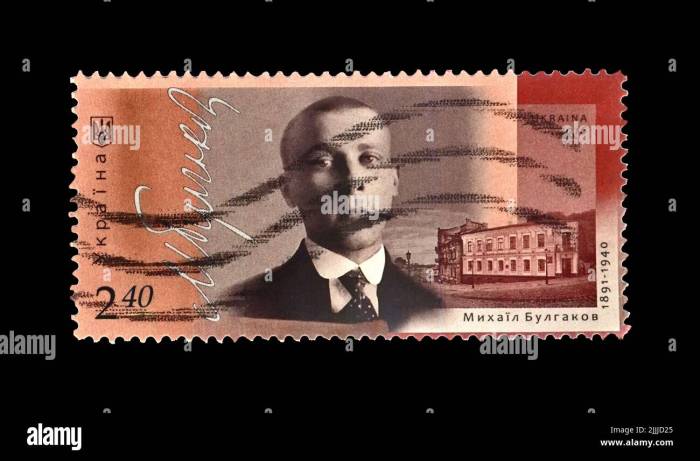
Mikhail Bulgakov’s “Master and Margarita” was written during the oppressive Stalinist era in the Soviet Union. The novel’s creation and publication were heavily influenced by the political climate and Soviet censorship.
Soviet Censorship and Political Climate
Soviet censorship strictly controlled the publication of literature, suppressing works that challenged the official ideology or criticized the regime. Bulgakov’s novel, with its satirical depiction of Soviet society and its exploration of religious themes, faced significant resistance from censors.
The novel’s depiction of the Devil as a complex and enigmatic figure, rather than an unequivocally evil force, was particularly controversial. The authorities viewed this as a challenge to their atheist propaganda.
Despite the challenges, Bulgakov managed to publish “Master and Margarita” posthumously in 1966, after Stalin’s death. However, it was heavily censored and edited to conform to Soviet ideological standards.
The novel’s historical and cultural context provides a lens through which to understand its themes, characters, and symbolism. It highlights the courage and resilience of artists who dared to challenge oppressive regimes.
Critical Reception and Legacy
Upon its publication in 1967, “Master and Margarita” received mixed critical reception. Some critics praised its originality, imagination, and satirical elements, while others criticized its complex structure and perceived anti-Soviet themes. In the years that followed, however, the novel’s reputation grew steadily, and it is now widely considered a literary masterpiece.
Enduring Popularity, Master and margarita chapter summary
“Master and Margarita” has become one of the most widely read and translated Russian novels of the 20th century. It has been adapted into numerous stage plays, films, and television series, and its characters and themes continue to resonate with readers worldwide.
Status as a Literary Classic
The novel’s enduring popularity is due in part to its unique blend of genres. It is at once a satirical comedy, a philosophical novel, and a fantasy adventure. Bulgakov’s vivid prose and memorable characters have also contributed to its status as a classic.
FAQ
What is the significance of “Master and Margarita” in Russian literature?
Master and Margarita is considered a masterpiece of Russian literature, renowned for its exploration of philosophical and religious themes, its innovative use of magical realism, and its critique of Soviet society.
Who are the main characters in “Master and Margarita”?
The main characters include the Master, a writer who has written a novel about Pontius Pilate and Jesus Christ; Margarita, his loyal and determined lover; and Woland, a mysterious figure who is both a devil and a savior.
What are the major themes explored in “Master and Margarita”?
The novel explores themes of good versus evil, love and sacrifice, the nature of reality, and the role of art and creativity in society.